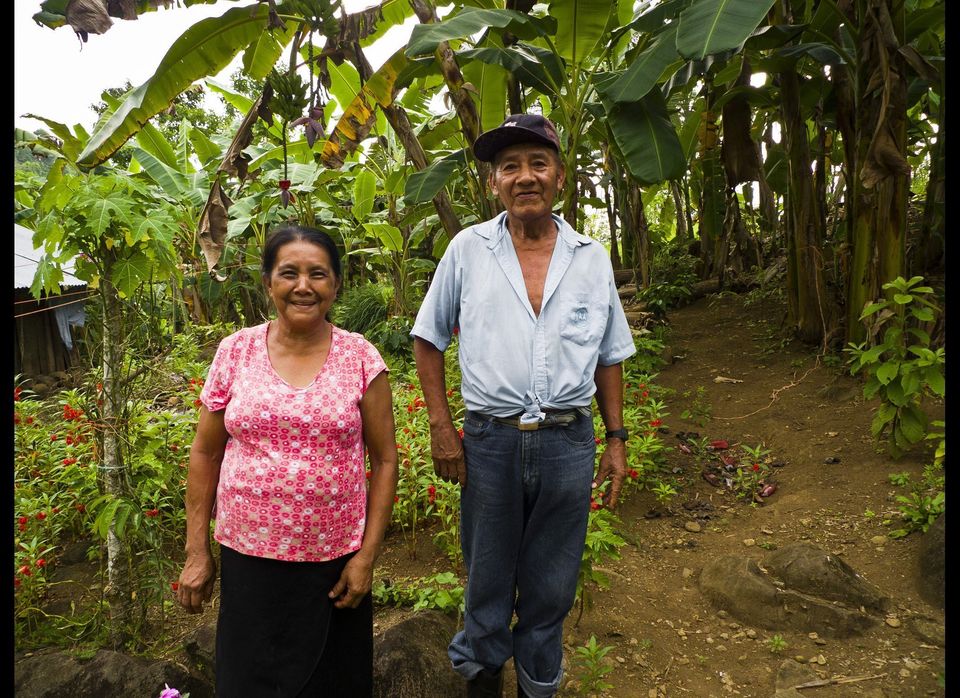
The terrain here in Costa Rica varies sometimes from footstep to footstep. You can drastically change your elevation in just a few minutes. The composition of the soil is just as varied. The piece of land down by our river has a beautiful dark, wormy soil while the orange soil at the top of the hill crumbles underneath your shoes. When we plant food and flowers, we have to take into consideration what the nutrient requirements are for each plant. In most cases, we need to haul soil from the riverbank and mix it in during planting.
When we decided on growing coffee, our reading suggested that coffee normally only grows at higher elevations. A great coffee bean is grown on the side of a volcano at about 2,000 feet elevation with clearly defined rainy and dry seasons. Our farm is only 300 feet above sea level at its highest point and summer last year was from April to July versus July through September this year. Basically anything goes when it comes to weather here. I walked to the store one day and it was raining in town and it was dry as a bone back on the farm. So, we set out to find a coffee plant that would meet our unique requirements.
We heard of an Indian couple that was growing coffee in an environment much like ours. They lived just on the next ridge and they had some starts for sale. They didn't have a road going up to their place so we would have to walk in. It took us a little while to find our way and we had to follow the sound of a dog to get us to the house. There we met this lovely couple.
They have their food inter-planted beautifully. The bananas shade their coffee plants, the ginger is shaded by cacao trees and the corn is in the open spots. They have fruit trees that are the size of our house, if not bigger. We took a long walk around while we were inspecting the health of the coffee plants and listening to the man's stories. He had a lot of questions for us about the United States. They asked us about snow, which is a common question for us here. It makes me miss a cold winter day on the farm in Indiana every time I am asked to describe it.
The plants were in great condition and just looking at the beans made me thirsty. We decided to buy 30 starts.
The woman and I went to the house while the men discussed the price. We have found that in this part of the country, especially on a farm, the men take care of the business. I had already told the husband what to pay so it didn't bother me. Maria showed me drawings done by her granddaughter that lived in the city. She said that her daughter was very busy and didn't visit much. I had a difficult time understanding everything she said but she looked proud while talking about her family.
When the men finally came to an agreement on $2 a plant, I was summoned to start picking out the ones I wanted. I wanted signs of growth, but nothing root-bound.
We planted our coffee directly across from where our house will be up on the hill. We didn't prepare the area for planting. We simply made holes directly where the plants were placed. The organic material left around the plants will slowly decompose, adding nutrients and causing less pests because they are camouflaged. They get dappled sunlight throughout the day and are protected from heavy winds and rains. Hopefully, my next coffee post will include the bright red coffee "cherries", how we roast the beans and us enjoying our first cup!
